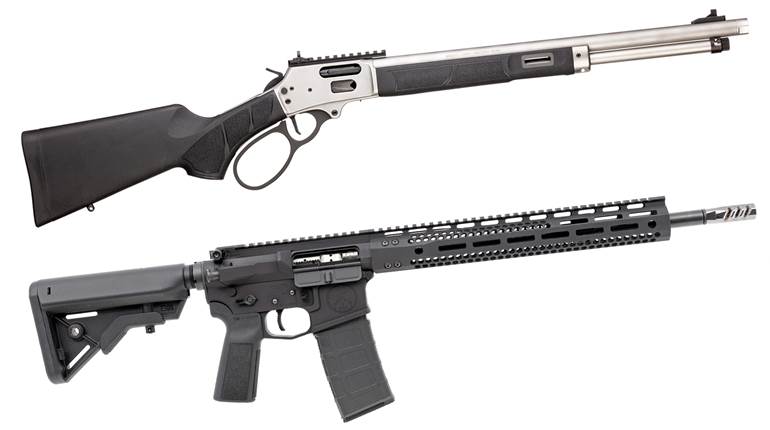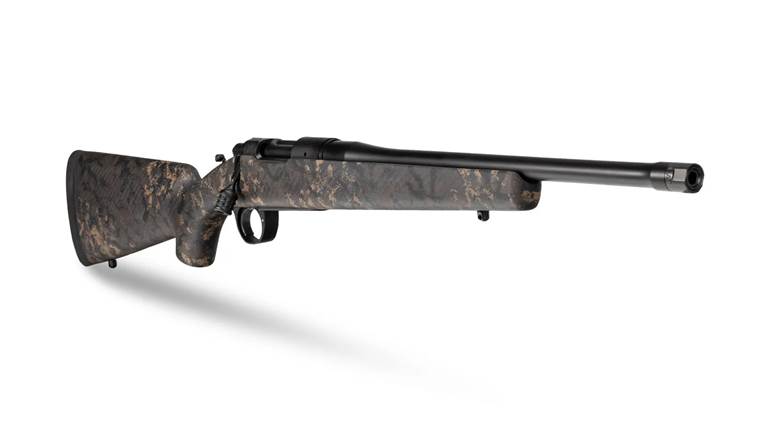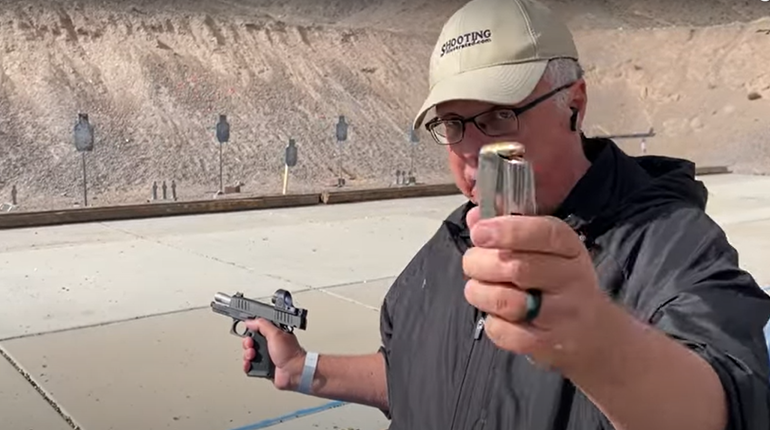![2009108142311-dutch[1]_fs.jpg](/media/kfkdoc1k/2009108142311-dutch-1-_fs.jpg?anchor=center&mode=crop&width=987&height=551&rnd=132615119315270000&quality=60)
On June 17, 1775, Patriot New Englanders faced the might of the British Army in a battle known today as Bunker Hill. Included among their muskets—often without bayonets or lugs at this stage of the war—were arms of English, French, American and Dutch origin. Dutch muskets were common from the very beginnings of the American Revolution and were employed through the end of the epic conflict.
When it comes to arms used by American colonists during the Revolutionary War, the names Brown Bess and Charleville are well known. But “Dutch/Liege” arms played a significant role in winning our Independence, a role that dated back to the start of New World colonization.
As the known world expanded through intense exploration and spawning settlements in North America during the 1600s, the most dynamic traders encouraging this phenomenon were the Dutch. Made up of an association of seven “United Provinces”—of which Holland was the largest—they followed claims based upon the travels of Henry Hudson in 1609, to establish their primary trade fort (later New Amsterdam) in the New World on the present site of New York City in 1614, six years before the Pilgrims landed in Massachusetts. Moving up the Hudson River, they then built Fort Orange (Albany, N.Y.) in 1624, which penetrated the lands of the Iroquois and Canadian tribes to establish the base for a major fur-trading network.
At the same time, as English settlements proliferated along the northeast and mid-Atlantic seacoasts, the aggressive Dutch also forged lasting commercial ties with them. To coordinate these activities the Netherlands created the Dutch West India Company with a monopoly of control over their trade throughout the Americas in 1621. After Britain finally occupied New Amsterdam in 1674, the Dutch continued to advance this flow of goods. Even facing England’s Navigation Acts and other restrictions, they were not averse to following the common practice of smuggling on an impressive scale when advantageous.
Importance Of Firearms: A critical item in this trade, especially with frontier colonists and Indians, was the firearm. Although such arms sales were officially restricted in many areas to discourage hostilities, the ongoing willingness of the Dutch to deal in guns and ammunition continued up through the American Revolution. The prime motivation of their aggressiveness was to stimulate trade rather than build domestic manufacturing. Thus, although they established a sizeable arms industry in Amsterdam, Maastricht and Rotterdam, they commonly subcontracted much of their needs to outside sources, such as Liege, Solingen, Suhl or Zella. Of these, Liege, an independent principality on the Meuse River now in modern Belgium and probably the largest private contractor in the world at that time (70 to 80 gunmaking workshops in 1788), was their major back-up supplier. Because of this close association, American collectors today often refer to unmarked Low Country guns from this period as “Dutch/Liege” arms.
New Focus as Merchants: By the time of the American War for Independence in the 1770s, however, the tough Dutch traders had prospered and become the comfortable merchants and bankers of continental Europe. Responding to the urgent demands from Washington to equip his army, France supplied large amounts of arms before and after it declared open war itself in 1778. This was followed by Spain’s entry in 1779. The Netherlands, however, struggled to remain neutral in order to generate profits from selling to both sides.
The Dutch were already strongly attached to Great Britain as a long-term ally in war. Moreover, William III of Orange had married Mary, the daughter of England’s James II. They, in turn, became the rulers of Britain as “William & Mary” following the “Glorious Revolution” in 1688. William’s surviving impact on his adopted country was widespread even to the visible Dutch influence in the ultimate design of the Brown Bess muskets. Records indicate that Britain regularly ordered shipments of Dutch arms to supplement her needs during the early 1700s, including the purchase of as many as 18,000 obsolete “Dutch/Liege” muskets in 1741 for distribution to her worldwide colonies. At least 4,500 of these are known to have been supplied to America prior to and during the French & Indian War (1754-1763).
As the Revolutionary War progressed, however, the Netherlands made valuable contributions to the rebel cause. In addition to the sale of their own arms, many shipments from European sources supplying the colonists were routed through the Low Countries for transportation in their neutral vessels to evade the British naval blockade of France and Spain. As a result, the Netherlands was torn between the opportunity for wartime profits, which attracted the governing class (Regents) and the working masses whose memories of the sacrifices for their own freedom favored the struggling Americans.
Colonial agents in Europe encouraged this sympathy at every opportunity. When John Paul Jones, for example, left on his Bonhomme Richard from France to raid England, Benjamin Franklin urged that, if successful, he should return to a Dutch port. Thus, following his victory over the HMS Serapis and the loss of his own ship, Jones brought his prize into Texel, Holland, to the great acclaim of its populace.
Importance of St. Eustatius: Beyond their material aid, the ultimate Dutch contribution to the winning of America’s freedom was the establishment of a conduit or supply route by which critical European aid could safely reach the rebels. In 1756 they had declared their small island of St. Eustatius (“Statia”) in the leeward group of the West Indies a free open port. Because the Dutch were neutral it could not be attacked, so the island now became the principal depot for the transshipment of goods to and from the American colonies. In 13 months from 1778-1779, for example, 3,182 ships cleared the island (i.e. 7 to 8 a day) while American vessels delivered 12,000 hogsheads of tobacco plus 1,500,000 ounces of indigo and large amounts of rice in payment. The rebels then returned to their colonies loaded with wartime goods and arms. This arrangement permitted various suppliers in Europe to ship cargoes directly to St. Eustatius or to the English, French, Spanish or Danish islands in the West Indies for transshipment to neutral Statia, which circumvented interference from Britain’s navy.
It also offered a special opportunity on November 16, 1776, to directly further the American cause. On that date the rebel brig-of-war Andrew Doria entering the port of St. Eustatius had its customary cannon salute unexpectedly answered by Fort Orange. More than a simple act, this was the first acknowledgment by a European power of the American colonies as a nation.
War is Declared: Understandably Britain was deeply upset by the Netherlands’ participation in American aid traffic and searched for a proper opportunity to end it. Finally in 1780, Henry Laurens, the former President of the Continental Congress who had just been appointed representative to The Hague was on his way to the Netherlands in the ship, Mercury, when it was captured by the British cruiser, HMS Vestal, off Newfoundland. At that time he properly emptied his diplomatic papers into a bag, which was weighted by shot, and threw it overboard. Regrettably the air remaining inside allowed the bag to float and be recovered by his captors. He was imprisoned in the Tower of London, and Britain used his documents as evidence to declare war against the Dutch in 1780.
The English Admiral Sir George Rodney quickly attacked St. Eustatius. The 130 vessels he captured in the port included 50 armed American ships and 2,000 of our seamen. Moreover, records he confiscated implicated many leading European merchants (including 57 English firms) who were transshipping contraband to the rebels through Statia and the West Indies. By that late stage of the war, however, the bulk of the aid had been delivered.
Lists of the total number of Dutch arms and supplies sent to the New World colonists are incomplete, but their ships carried a substantial share of the European tonnage and the obscure island of St. Eustatius was a vital rendezvous in its traffic pattern. Of equal importance to America’s destiny was the granting of four major loans by the Netherlands from 1782-1788, which probably saved our young nation from bankruptcy and possible economic collapse at the end of the war. The contribution of “Dutch/Liege” arms to America’s early history is evident from the large number of surviving examples in our collections as well as their reused components on many of the guns locally assembled by the colonists.
Firearm Characteristics: The wide variety of firearm patterns traced to the Netherlands reflects their emphasis on fulfilling contracts to satisfy varied customers worldwide as well as their own internal needs. Most of the Dutch fowlers and muskets have round barrels of .75 to .80 caliber, which were usually pinned prior to the 1750s by which time three or four bands became typical. Their furniture was usually brass while the walnut stocks included a heavy buttstock with a raised comb plus teardrop and arrowhead carving surrounding the lock, sideplate and barrel tang. Broad rounded locks predominated early and late in the 1700s, as opposed to the less expensive flat/faceted edge form which was favored c.1720-1770. The majority of ramrod pipes accompanying the pinned barrels were faceted, and one or two visible screws usually held the extended butt tangs. Such features were popular with the American colonists and were incorporated into their Hudson Valley fowler patterns being developed here as early as 1730.
Today these firearms continue to represent the survival of our early settlers struggling through incredible hardships to establish their dreams of freedom thanks in large part to the aggressive Dutch traders who early realized the potential of the New World and contributed mightily to our success. Sincere appreciation is given to Joseph C. Devine for his generosity in photographing the collection for this article at his J. C. Devine facilities and to the photographer, Jerry Desmarais.






































